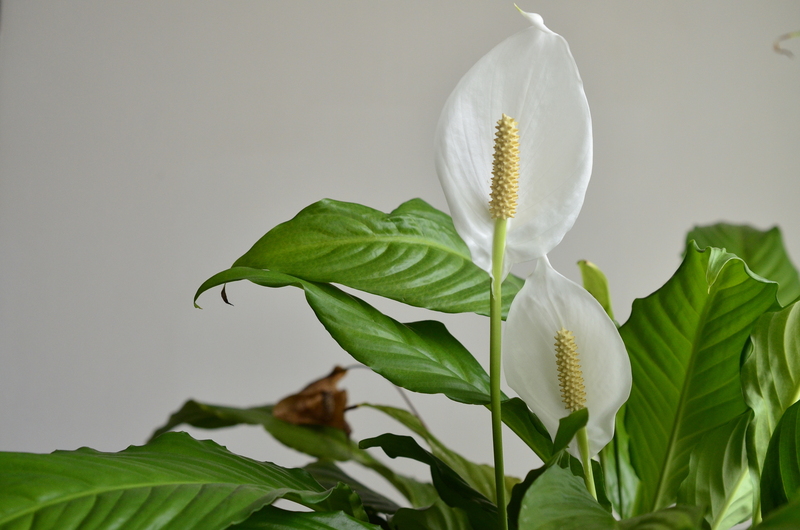Discover the Triad of Tips for Superior Weed Control Success
Posted on 17/08/2025
Discover the Triad of Tips for Superior Weed Control Success
Maintaining a lush and thriving garden or lawn involves far more than just watering and pruning. Weed control is a cornerstone of successful gardening, and achieving superior weed management requires a multifaceted approach. If you are tired of relentless weeds undermining your hard work, you're in the right place. This detailed guide will introduce you to the triad of tips for weed control success--key strategies that, when applied together, result in a healthy, vibrant, and virtually weed-free landscape.
Why Managing Weeds Is Essential to Garden Success
Weeds are more than just an eyesore--they
- Steal vital nutrients and moisture from desired plants,
- Harbor pests and disease,
- Compete for sunlight and space,
- Rapidly take over lawns or garden beds if left unchecked.
Knowledge and strategy are your best weapons in the war against weeds. By implementing a triad of targeted weed control techniques, you can prevent weeds from gaining a foothold while supporting healthy, beautiful vegetation.

The Triad of Tips for Superior Weed Control
After years of research and hands-on gardening, experts agree: a three-pronged approach provides the most comprehensive and long-lasting results. Let's break down the triad for optimum weed eradication:
- Prevention and Barrier Methods
- Proactive Manual and Mechanical Removal
- Selective and Smart Use of Herbicides
Read on to learn how to put each element into action for superior weed control success in your lawn or garden.
1. Prevention and Barrier Methods: Stopping Weeds Before They Start
Prevention is the cornerstone of effective weed management. By making your soil and outdoor space inhospitable to weed seeds, you thwart their establishment and minimize future battles. Here's how to accomplish this critical step:
Mulching for Weed Suppression
Mulch acts as a physical barrier, blocking sunlight from reaching the soil surface. This prevents weed seeds from germinating and taking root.
- Organic Mulch: Wood chips, straw, shredded leaves, pine bark, and grass clippings all enrich soil as they decompose.
- Inorganic Mulch: Stones, landscape fabric, and black plastic provide longer-lasting weed barriers.
Pro Tip: Lay mulch at a depth of 2-4 inches--too shallow and weeds may break through, too deep and you may smother your plants.
Landscape Fabric and Weed Barriers
Installing quality landscape fabric blocks weed growth while allowing water and nutrients to reach plant roots. For best results, cut holes for desired plants and overlap sheets to stop weeds from finding a way through the seams.
Crowd Out Weeds with Dense Planting
Nature abhors a vacuum. When you densely plant garden beds, you leave less real estate for weeds. Choose ground covers or fast-growing annuals to fill empty spaces and outcompete weed seedlings.
- Ground Covers: Plants such as creeping thyme, clover, and vinca minor fan out rapidly, shading the soil and choking out emerging weeds.
- Companion Planting: Mix heights and root depths for a thick, layered effect that stifles weed growth.
Maintain Healthy, Fertile Soil
Vigorous, healthy plants can better compete with weeds. Test and amend your soil regularly--fertilizing, adding compost, and correcting pH imbalances as needed boosts plant health and denies weeds an easy opportunity.
2. Proactive Manual and Mechanical Removal: Stay One Step Ahead
Even the best prevention techniques can't stop every weed. The heart of superior weed control lies in actively seeking out and removing weeds before they go to seed and spread.
Regular Hand Pulling
Hand removal remains one of the most reliable methods for weed eradication, especially in garden beds and around valuable ornamentals. Here's how to do it best:
- Pull weeds after rain or watering when the soil is damp--roots slide out more easily.
- Grip weeds at the base and tug gently to remove the entire root system, especially taprooted invaders like dandelions.
- Dispose of weeds promptly; avoid tossing seeding weeds onto compost piles unless your compost heats enough to kill seeds.
Quick Fact: Many common weeds can regrow from cut roots left in the soil. Always aim to extract the full root structure!
Weed Control Tools: Making the Job Easier
Manual labor doesn't have to be a chore. Specialized weed removal tools speed up the process and target stubborn weeds more effectively:
- Hoes: Ideal for slicing small weeds just below the soil surface, allowing them to dry out in the sun.
- Hand Weeders: Narrow blades or forked tips let you extract deep-rooted weeds with minimal soil disturbance.
- Weed Pullers: Long-handled, foot-operated pullers grab and remove entire weeds, roots included, with little bending.
- Cultivators: Loosen soil to uproot weed seedlings and prepare beds for planting.
Use these tools regularly, especially in early spring and after rainfall, to prevent weeds from establishing dominance.
Timely Mowing and Edging
In lawns, keeping your turf trimmed to the proper height helps shade out weeds and prevents seeding. Edge borders and walkways frequently to stop creeping weeds from infiltrating garden beds.
3. Selective and Smart Use of Herbicides: Targeted Solutions for Persistent Weeds
For some tough cases, hand removal and barriers aren't enough. Strategic herbicide use can tip the scale when dealing with aggressive or extensive weed infestations. Here's how to use them wisely:
Types of Herbicides
- Pre-Emergent Herbicides: These prevent weed seeds from germinating and are most effective when applied to weed-prone areas before weed emergence. Use in early spring or fall as directed.
- Post-Emergent Herbicides: Applied to existing weeds, these control actively growing unwanted plants. Look for selective formulas that target broadleaf weeds if you're treating grassy areas like lawns.
Best Practices for Superior Weed Control with Herbicides
- Always read and follow application instructions exactly as printed on the label.
- Apply herbicides when weather is calm, dry, and rain is not forecast for at least 24 hours.
- Spot-treat rather than blanket-spraying to minimize chemical use and protect beneficial plants.
- Rotate different herbicide classes to prevent the development of resistant weed populations.
- Wear protective clothing, gloves, and eyewear during application, and store chemicals safely away from pets and children.
Remember: Always try cultural and physical control methods first, reserving herbicide use for the most challenging situations.
Combining the Triad for Maximum Weed Control Success
The most long-lasting and reliable weed-free environments are achieved by layering these three techniques for superior weed control. Here's how they work together:
- Prevention keeps most weeds from ever appearing.
- Manual and mechanical removal stops the few that get through from spreading.
- Selective herbicide use deals with stubborn holdouts that would otherwise take over.
By applying all three principles in union, you'll enjoy lasting results with less labor and fewer chemicals, benefiting both your garden and the environment.
Additional Weed Management Tips for Challenging Environments
Certain scenarios present unique weed challenges--here's how to adapt the triad for superior weed control in tricky locations:
Weed Control in Lawn Grass
- Mow lawns at the recommended height for your turfgrass variety to shade out weeds.
- Regularly aerate and overseed to maintain dense turf that outcompetes invaders.
- Apply pre-emergent herbicides in early spring before annual weeds like crabgrass germinate.
Weed Management in Vegetable Gardens
- Mulch with straw or untreated grass clippings between rows to suppress weeds and maintain soil moisture.
- Hand-weed frequently, especially around young edible plants, to prevent competition for nutrients.
- Use drip irrigation to deliver water directly to crops, favoring your veggies over weeds.
Patios, Walkways, and Hardscapes
- Install high-quality landscape fabric beneath gravel or pavers to stop weeds from sprouting.
- Treat cracks in paths or driveways with boiling water, vinegar-based solutions, or spot herbicides for eco-friendly weed control.
- Seal joints with polymeric sand or grout to deny weeds a foothold.
Weed Control in New Plantings and Restoration Projects
- Solarize soil by covering it with clear plastic for several weeks during summer; this heats the soil and kills weed seeds before planting.
- Consider cover crops in off-seasons to smother weeds and enhance soil fertility.
Common Weeds to Watch Out For and How to Control Them
Some weeds are notorious for their resilience. Recognizing major offenders and adapting your approach is key for superior weed eradication. Here are a few to identify and confront:
- Dandelion: Best pulled after rain. Persistent taproot may require a hand weeder. Spot-treat where needed.
- Crabgrass: Pre-emergent herbicide in lawns, dense turf maintenance, and regular mowing keeps it at bay.
- Bindweed (Morning Glory): Requires persistent digging combined with mulching. Avoid tilling, which spreads root fragments.
- Purslane and Spurge: Hand-pull when young, and use mulch to suppress new growth. Remove before seeds form.

Frequently Asked Questions About Weed Control
Why do weeds keep coming back even after I pull them?
Many weeds have deep or spreading roots that regenerate after only partial removal. Some weeds produce thousands of seeds, waiting to germinate when conditions are right. That's why a tailored, triad-based approach combining barriers, removal, and occasional herbicide use proves most effective for lasting weed management.
Is there a way to eliminate weeds without chemicals?
Absolutely! Prevention methods such as mulching, dense planting, and landscape fabrics are highly effective. Regular hand-weeding, hoeing, and thermal treatments (boiling water, flame weeders for hardscapes) all provide chemical-free options for weed eradication.
How often should I weed my garden or lawn?
Catching weeds early halts their spread. Inspect your garden or yard weekly, and address weeds while they're still small. The more consistent your attention, the less work you'll need to do over time.
Can I compost weeds?
Certain weeds, especially those that have not gone to seed, may be composted. However, most home compost piles do not reach temperatures high enough to destroy seeds or tough roots. When in doubt, bag weedy debris for curbside removal to avoid re-infestation.
Conclusion: Achieving Weed-Free Excellence with the Triad of Weed Control
Weeds are inevitable, but with the right blend of techniques, you can achieve superior weed control success and nurture the beautiful garden or landscape you desire. By practicing prevention and barriers, investing time in proactive removal, and, when necessary, using selective herbicides, you create a powerful defense against even the most persistent invaders.
Take action today! Assess your property's needs, layer these strategies, and enjoy the promise of a healthier, more resilient, and weed-free environment--season after season.

